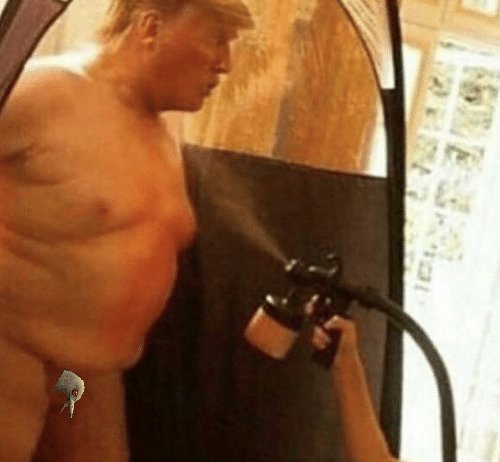mollwollfumble said:
monkey skipper said:
well , didn’t this thread take an unexpected turn or two or three.
Unable to open link in OP. Does it mention the two previous hummingbird size vertebrates found in amber?
Fossil of tiny hummingbird-like dinosaur with teeth found in 99-million-year-old amber
Oculudentavis was no bigger than the bee hummingbird, the smallest living bird today.
Around 99 million years ago, a tiny hummingbird-like dinosaur flitted through the lush forests of what is now Myanmar.
Key points
The skull of a tiny bird has been found in 99-million-year-old amber sourced from Myanmar
The fossil is thought to be the smallest known dinosaur that lived during the Mesozoic era
The fossil provides an important insight into the evolution of birds from dinosaurs
When it died, its skull was entombed in amber and preserved forever in stunning detail.
The ‘eye tooth bird’ Oculudentavis khaungraae is a completely new species, said study co-author palaeontologist Luis Chiappe of the Natural History Museum of Los Angeles.
“It doesn’t belong to any known group of dinosaurs or birds,” Dr Chiappe said.
The tiny creature, which has a skull less than half the size of an Australian five cent coin, is described in the journal Nature.
It is thought to be the smallest known dinosaur that lived during the Mesozoic era between 252 and 66 million years ago.
With a brain case just 7.1 millimetres across and probably weighing only about 2 grams, the little animal is on par in size with the bee hummingbird, the smallest known bird living today.
The fossil skull is half the size of an Australian five cent piece.
Birds descended from a group of dinosaurs called theropods that included the much larger Tyrannosaurus rex and Archaeopteryx, the first bird-like dinosaur which appeared around 150 million years ago.
While the shape of the new fossil looks like a bird, the skull structure is different to today’s birds as well as theropods.
Its large eye socket and beak filled with sharp teeth are reptilian features typical of lizards, which suggest the animal lived on a diet of insects, not nectar like today’s hummingbirds.
The shape of the ring of bones within the eye socket, which also resemble those of a lizard not a bird, indicate it hunted during the day.
The weird mix of features seen in the skull may have arisen due to miniaturisation — a phenomenon that is common to species that live on islands, said study co-lead Jingmai O’Connor of the Chinese Academy of Sciences.
“Animals that have become very small have to deal with specific problems, like how to fit all sensory organs into a small head or how to maintain body heat,” Dr O’Connor said in a statement.
The fossil, which was donated to the Hupoge Amber Museum in China in 2016, was sourced from the conflict-torn Kachin state of northern Myanmar known for its rich amber deposits.
Amber, which was originally tree resin, is particularly good at capturing fine details and preserving small organisms that rocks can’t.
Previous fossils identified from this area by palaeontologists led by Lida Xing of the Chinese University of Geosciences include a feathered dinosaur tail, several birds, and a snake.
“ is so small that there’s nothing like that in the lithic record,” Dr Chiappe said.
“Having a window into this highly diverse environment that must have harboured the majority of life is really important.”
CT scan of the skull of Oculudentavis shows its large eye sockets and unique skull bone pattern.
To understand this ancient world, the palaeontologists turned to very modern technology.
“Amber from Myanmar tends to be fairly opaque, even when its polished,” Dr Chiappe said
.
Although the outline of the fossil was visible, the scientists needed to scan it using a particle accelerator to see inside.
“Atomic particles are being put to use to see inside a piece of opaque, 99-million-year-old amber to get the details of this tiny little creature,” Dr Chiappe said.
A bridge between dinosaurs and birds
Mike Archer, a palaeontologist at the University of New South Wales, said the fossil provided new insights into the boundary between dinosaurs and birds.
“While it’s probably from an animal somewhat similar to Archaeopteryx, Archaeopteryx was a squashed critter in the shales found in Germany,” Professor Archer noted.
“It is very hard to understand the structure of the skull of that most important early bird.
“Well here’s a three-dimensional — four-dimensional if you factor in time — beautifully preserved skull of an animal that helps us understand that bridge.”
There’s a dino explosion
The researchers think O. khaungraae sat between Archaeopteryx and Jeholornis, a long bony tailed bird that lived about 120 million years ago.
One feature that is especially interesting, Professor Archer said, was the way the bone plates around the tiny brain box had fused.
“The sequence of which of the various bones in the head fuse up are pretty standard for bones, but this one seems to show a different pattern that may be more characteristic of reptiles.
“This is a new insight into how the ancestors of modern birds developed their heads.”
Amber may have the potential to preserve more than bones, soft tissues and feathers, said Professor Archer, who has studied fossils found in the gemstone sourced from Cape York in northern Australia.
While there is a large degree of scepticism around claims of extracting DNA from amber fossils, “you can’t presume what you’re not going to be able to find in that specimen,” he said.
“Maybe in that amberised skull there are going to be organic materials preserved as well.”


